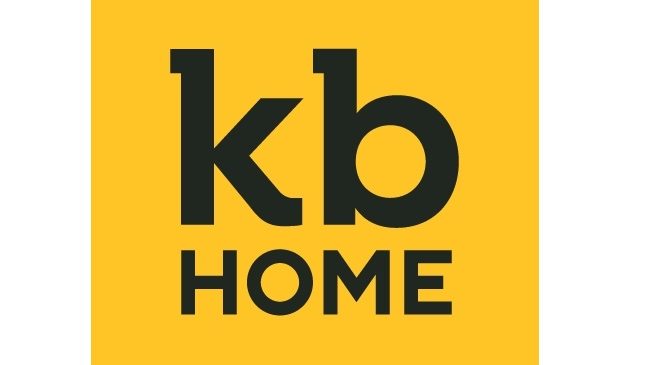Working from a large backlog provided “stability” in deliveries and buoyed a strong fiscal first quarter for KB Home, the builder said in its earnings call.
President and CEO Jeff Mezger previously noted the company’s backlog had become “overextended relative to historical levels” at the beginning of 2023, but the home builder made progress converting backlog into deliveries during the fiscal first quarter.
At the end of the first quarter, KB Home’s backlog was 7,016 homes valued at over $3.3 billion.
“This [backlog] position will continue to provide consistency in deliveries and margins and supports our revenue projection for the year,” Mezger said on the home builder’s quarterly earnings call.
KB Home home also started more than 1,500 homes in the quarter. Mezger said KB Home will be “ramping up” its starts in the fiscal second quarter as the company continues to balance starts with sales.
KB Home delivered 2,788 homes in the first quarter, a 3% decline on a year-over-year basis from the first quarter of 2022. Mezger said approximately 37% of deliveries in the first quarter were from inventory sales—either a spec start, a rewrite of a cancellation, or a model sale—and the builder achieved its first deliveries in two new markets, Charlotte and Boise.
The average selling price of homes delivered increased 2% year over year to $495,000 in the first quarter, as 10% to 12% increases in three regions were mostly offset by a 5% sales price decrease in KB Home’s west region.
KB Home generated total revenues of $1.4 billion in the first quarter, in line with revenues from the first quarter of 2022. Home building operating income decreased to $156.5 from $169.6 million in the first quarter, and home building operating income margin fell 80 basis points to 11.4%.
Demand Conditions
Mezger said demand in the “back half” of the first quarter, ended Feb. 28, improved significantly and KB Home experienced sequential increases in net orders in both January and February. For the full first quarter, the home builder generated 2,142 net orders, a 49% year-over-year decrease. The decrease was smaller than the builder’s projected range of a 50% to 60% decrease in net orders for the first quarter.
“A more stable mortgage rate environment during January and February where rates had settled in to a low-to-mid 6% range was also beneficial in moving potential home buyers off the sidelines,” Mezger said. “Buyers seem to be acknowledging that these higher rates are the new normal as they return to the market.”
Gross orders also improved sequentially throughout the first quarter, increasing 64% month over month in January and 58% month over month in February. KB Home’s gross absorption pace reached 6.6 orders per month in February, well above the long-term average for the month, and contributed to an overall monthly pace of 4.5 gross orders per community for the quarter.
The cancellation rate as a percentage of gross orders was 36% for the first quarter, compared with 11% in the first quarter of 2022. However, on a sequential basis, the cancellation rate improved from 68% in the fourth quarter.
“While interest rate and economic uncertainties pose a large risk to the near-term demand, we are encouraged with our recent order trends,” Mezger said. “ Our strategic goal continues to be a monthly absorption pace of between four and five net orders per community, which we think we will achieve for the second quarter.”
Sales Approach
During its fourth quarter earnings call, chief operating officer Rob McGibney outlined how the builder was taking two different sales strategies depending on the number of homes in backlog. McGibney said KB Home continued to employ the two strategies during the first quarter. For high backlog communities, KB Home continues to place on emphasis on interest rate buydowns and lock programs to support sales instead of price cuts. For communities with smaller backlogs, the company is adjusting prices to “find the market,” McGibney said.
“During the first quarter, we continued to utilize these strategies and reduce prices at about one half of our communities,” McGibney said. “At the same time, considering the results that previous pricing actions generated together with an improving demand environment, we increased prices in some of our other communities as they were selling at a faster than targeted pace.”
Land Strategy and Cost Savings
KB Home maintained its conservative approach toward land investments in the first quarter, with investments in new land purchases of $50 million, an 86% year-over-year decrease. Mezger said the company will stay “highly selective” with respect to land investments “until the markets settle and there’s clarity in pricing to gain confidence in achieving our required returns.” KB Home invested $317 million land development and related fees in the first quarter. KB Home ended the first quarter with 62,400 owned or controlled lots, a 30% year-over-year decline.
“As part of a regular review of our land portfolio, we have been active in renegotiating land contracts to reduce purchase prices and extend closing timelines,” Mezger said. “We are also canceling contracts that no longer meet our financial criteria, including contracts [to] purchase approximately 3,800 lots during the first quarter.”
KB Home also highlighted efforts driving cost reductions during the first quarter. The builder realized savings on new starts in the first quarter, which were down relative to their peak in August 2022 by about $19,000 per unit, which helped offset price decrease, according to McGibney.
“Although we are working to reduce trade labor costs, they are proving to be sticky, and the market improvement in early 2023 is resulting in increasing starts across the industry that may slow our progress, but we remain committed to driving additional savings as we progress through the year,” McGibney said.



